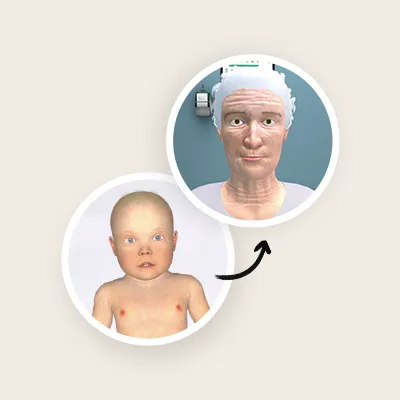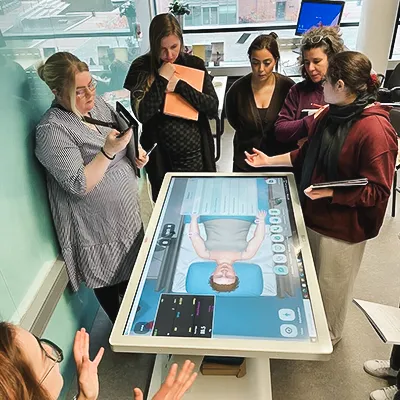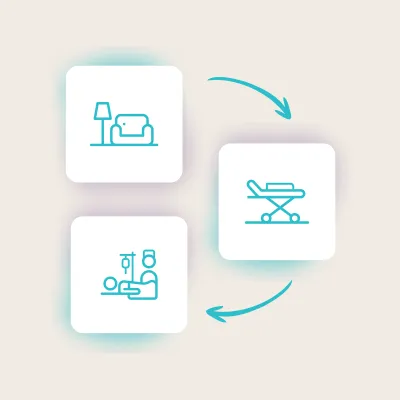Leading a New Era of Medical Education at UNITEC and UVM Mexico
Turning a Challenge into an Opportunity for Innovation
When the pandemic interrupted clinical practice for students across Honduras and Mexico, UNITEC and UVM Mexico, both part of the Laureate Group, faced an urgent challenge: how to ensure meaningful, hands-on learning without access to clinical fields.
Under the leadership of Dr. Jessy Mariel Escobar, National Director of Medicine, Dentistry, and Educational Model, the institutions began searching for a high-level educational tool capable of replicating real patient care experiences. That’s when they discovered Body Interact’s Virtual Patient Simulator.
Integrating Virtual Patients into the Curriculum
The implementation went far beyond simply introducing new technology. Each Body Interact clinical scenario was carefully mapped against the learning objectives of every course, ensuring alignment with the academic curriculum.
“Our goal was to make the experience both meaningful and academically relevant,” explains Dr. Escobar. “By matching simulation objectives with our own, we made sure that Body Interact truly became part of the learning process.”
To support this shift, UNITEC and UVM trained professors and coordinators across all programs, establishing a multi-campus model, nine campuses at UNITEC and thirty at UVM, powered by Sunbird’s infrastructure and Body Interact’s flexible administration features
Reimagining Clinical Assessment with Virtual OSCEs
Driven by the success of simulation in daily learning, UNITEC launched a new virtual OSCE (Objective Structured Clinical Examination) model using Body Interact.
Running traditional OSCEs with groups of up to 200 students had always been a major logistical challenge. By integrating Body Interact into the assessment process, the universities created a scalable and standardized system that improved both evaluation and learning outcomes.
“We found in Body Interact an excellent alternative to evaluate our students within large groups,” Dr. Escobar explains. “The feedback from students has been very positive, they see it not just as an evaluation, but as a learning experience that motivates them to keep improving.”
Over the past year and a half, these virtual OSCEs have produced remarkable results. The data and feedback have inspired updates in teaching strategies, practice sessions, and curricular design, all aimed at improving the quality of student training.
“The results have led us to make changes in our programs and clinical practices,” says Dr. Escobar. “It’s not just about performing better in an exam, but improving the entire learning process.”
A Lasting Collaboration for the Futures
After nearly three years of continuous implementation, UNITEC and UVM have fully integrated Body Interact as a permanent tool within their healthcare education programs.
With the ongoing partnership between Body Interact, Sunbird, and the Laureate Group, both institutions are leading the way toward more accessible, technology-driven clinical education, preparing students not only to pass evaluations, but to think, act, and care like real healthcare professionals.
Expanding Across Disciplines
What began in the Nursing program soon expanded to Medicine, Physiotherapy, and Dentistry, bringing the same simulation-based methodology to thousands of students.
The virtual scenarios quickly became an essential part of clinical training, complementing in-person labs and clinical rotations. Students first interact with Body Interact to explore cases, practice technical and reasoning skills, then move to the skills labs to perform hands-on procedures, and finally return to Body Interact for deeper reflection and decision-making analysis.
“Each cycle combines technology, teamwork, and feedback,” says Dr. Escobar. “It allows students to grow in both confidence and competence.”
Discover more
Explore how Body Interact is helping academic institutions worldwide bridge the gap between theory and practice Here.
About UNITEC and UVM
UNITEC (Honduras) and UVM (Mexico) are part of the Laureate International Universities Network, a global leader in higher education with a strong focus on innovation and student-centered learning.
By Daniela Abreu – Body Interact’s Instructional Designer









